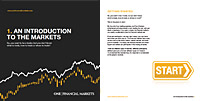

USD/CNH
Position volume
Client trades
China's socialist market economy is the world's second largest by nominal gross domestic product and purchasing power parity, beaten on both measures only by the US.
As a result, it is no surprise traders are taking a keen interest in the country's currency, the renminbi (RMB). The unit of account is called the yuan, but the RMB is the currency traded onshore and offshore, though there is a separation between these two markets.
This is because the leadership in Beijing impose capital controls in order to prevent money flowing abroad or vice versa. Therefore, when the RMB is traded within mainland China, it is referred to as CNY, while offshore trades - primarily in Hong Kong - use the USD/CNH pairing.
It is important investors are aware that while the renminbi is a single currency, it can trade at two different exchange rates, dependent on where the market is situated.
The CNH was formed as part of China's attempts to increase the significance of its currency in global markets. While volumes of USD/CNH trading remain relatively small and the pairing is generally highly liquid, it is becoming more popular as Beijing scales back restrictions.
For example, reforms in 2010 made it possible for the RMB to leave mainland China and head to Hong Kong for trading purposes. Following this move, foreign investors now have unrestricted access to the currency through cash accounts, forex trading, bonds, equities and through cross-border trade via Hong Kong.
Understandably, data releases relating to China's economic development have a significant impact on the USD/CNH pairing and should be monitored closely by those looking to trade the currency.
Monday 00:01 - Friday 23:58
Begin trading today! Create an account by completing our form
Privacy Notice
At One Financial Markets we are committed to safeguarding your privacy.
Please see our Privacy Policy for details about what information is collected from you and why it is collected. We do not sell your information or use it other than as described in the Policy.
Please note that it is in our legitimate business interest to send you certain marketing emails from time to time. However, if you would prefer not to receive these you can opt-out by ticking the box below.
Alternatively, you can use the unsubscribe link at the bottom of the Demo account confirmation email or any subsequent emails we send.
By completing the form and downloading the platform you agree with the use of your personal information as detailed in the Policy.






